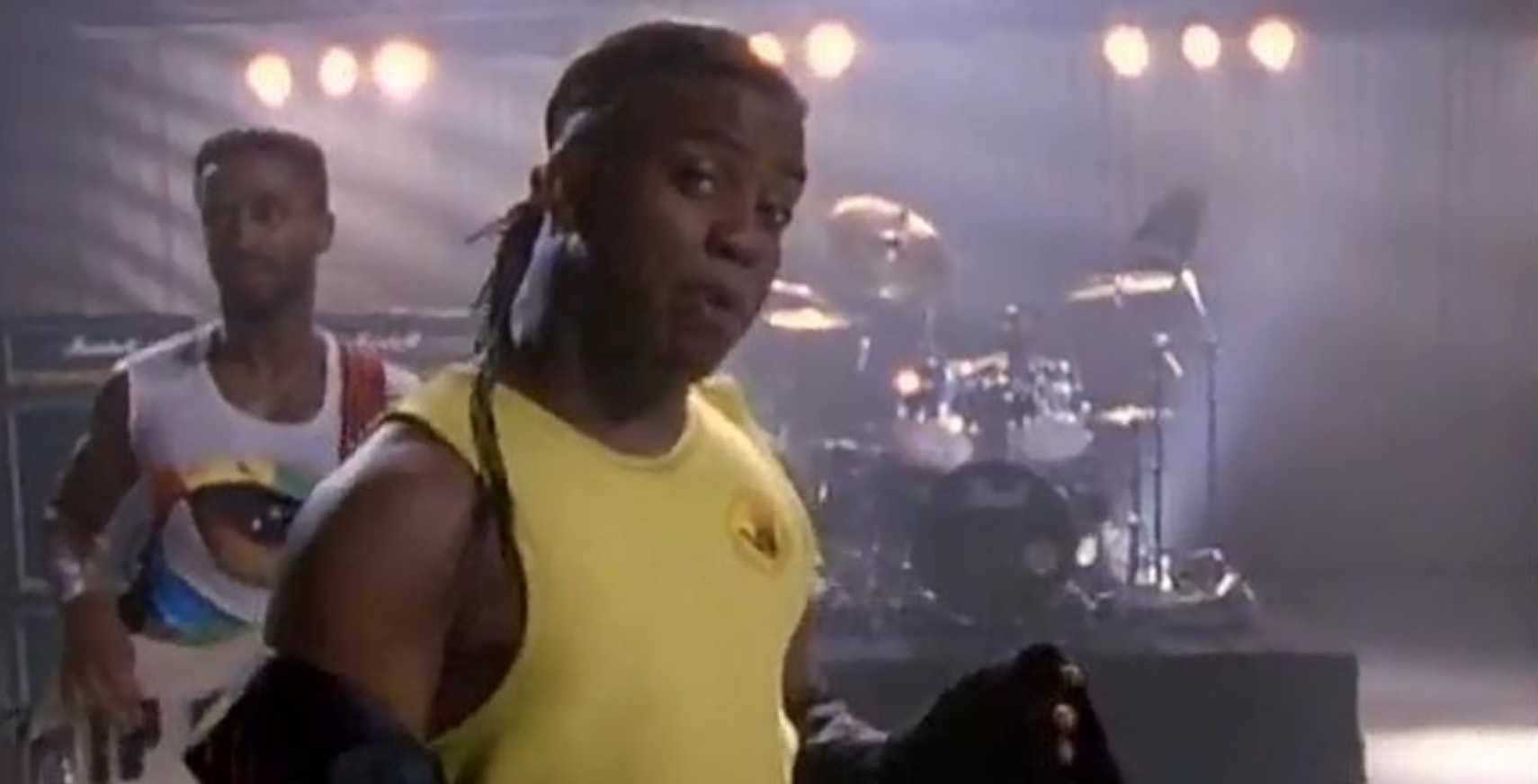World Building
Afrofuturism exists as an intellectual platform for building vast, imaginative worlds, but it also fosters real, physical spaces that nurture Black creative expression. From artistic collectives formed during the Black Arts Movement of the ’60s and ’70s, to various musical, artistic, and dance communities that developed during the hip-hop of the 70s and 80s, to the formation of the Black Rock Coalition in the 80s and 90s, building real communities has been an essential element of Afrofuturism and its growth as a cultural movement.
Forming the Black Rock Coalition
Group portrait of Black Rock Coalition members, 2000. Top row Don Eversley, Tim Michael, Kelly Taffe, Andre Anthony, Bill Toles, Lewis “Flip” Barnes. Middle row (left to right): Marque Gilmore, Susan Stovall, Tracie Morris, Greg Tate, Luther Smith, Jerome Harris, Derin Young, Michael Hill. Bottom row (left to right): Vernon Reid, Steve Williams, Jared Michael Nickerson
The Black Rock Coalition (BRC) formed out of shared artistic and musical interests, but mostly out of necessity. In the 1980s, the recording industry pigeonholed Black musicians, and especially Black women, within fixed classifications and rigid genres that excluded them from the world’s most popular genre: rock. Founded in 1985 by guitarist Vernon Reid, producer Konda Mason, and journalist Greg Tate, BRC is a nonprofit collective of artists, intellectuals, fans, and individuals “dedicated to the complete creative freedom of Black artists.”

Promoting Black Rock Coalition
Before the advent of social media, posters and magazines advertised not only the upcoming performances of Black Rock Coalition artists but also served as invitations to fellow creatives, intellectuals, artists, and futurists who have made up the BRC.

We created this platform for electric, esoteric, experimental, and avant-garde Negroes to find one another, like unicorns in the forest.
Greg Tate
Living Colour
Living Colour performing on stage, 1989
Perhaps the most well-known members of the Black Rock Coalition, Living Colour is a Black American rock band that burst onto the music scene in 1984 with an unconventional musical style and a colorful aesthetic. With their debut album Vivid, Living Colour introduced a new, genre-defying heavy rock sound fused with social commentary. Vivid challenged the existing limits of Black artistry within rock music and led to a Grammy Award for their popular single, “Cult of Personality.” Many of the group’s songs describe a futuristic world in which various forms of Blackness are normalized, embraced, and celebrated.
Featured Video
“Cult of Personality” by Living Colour
Music video for the hit song “Cult of Personality” by Living Colour


